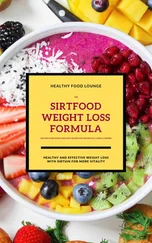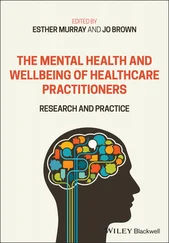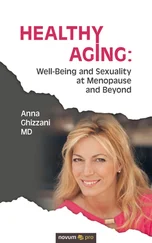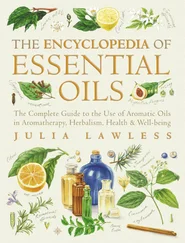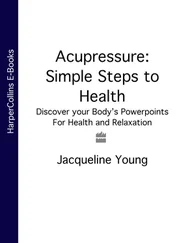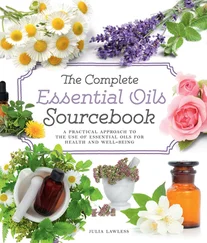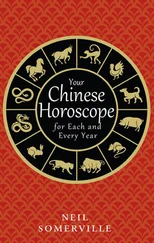Dispelling a headache
Ask your friend to sit comfortably. Rest your right hand on his or her forehead and your left hand on the back of the neck, and keep your hands still for at least three minutes. Now move your hands about 9 inches away from your friend’s head and neck, imagining them offering a healing space into which the “disease” of the headache can melt. Finish by placing both of your hands in light contact with your friend’s head for about a minute.
When tai chi is practiced regularly, a combination of mindset, visualization, body shape (the positions made by the body), and movement create the conditions for streams of energy to flow vigorously through the body, stimulating the internal systems. It is said in the ancient writings on tai chi that the chi (life energy) follows the mind – each posture cultivates a different kind of energy flow, depending on visualization and the body shapes it makes. The hands are transmitters for this energy, and become charged by the large amounts of information that pass through them.
Healing is a natural force that cannot be made to take place, any more than a plant can be made to grow. The role of the individual in the process is to try, through tai chi, to create the conditions in which energy can flow, and to give the body time to heal itself.
The idea in massage for tai chi is to develop your spontaneity and intuition for self-healing. There are no special strokes to apply, and you need not worry about direction or pressure of stroke. Begin by following your own feelings about what to do. Rub briskly if you want to, or stroke gently.
MASSAGING THE FACE
Bring both hands to your chin and slowly draw them up over your face, back through your hair, and down your neck. Repeat five times.
MASSAGING THE EARS
Rub the lobes of each ear vigorously, then run your finger and thumb around the rim of the ear and back again to each ear lobe.
MASSAGING THE EYES
Close your eyes and (always with clean hands) stroke the upper eyelids lightly with the middle finger from close to the top of the nose out to the side of the head. Repeat this action at least seven times, then stroke the bottom eyelid in the same way.
MASSAGING THE FEET
Massaging your feet stimulates the nerve-endings and is relaxing and comforting. Hold or rub your feet one at a time for at least two minutes each.
MASSAGING THE HANDS
Massage stimulates the many nerve-endings in the hands, improving the circulation and bringing life to them. Gently or vigorously rub your hands. Pay attention to each finger and both thumbs, the palms, and the backs of the hands.
The feet work hard, yet they tend to be neglected. They benefit from massage, especially before and after practice.
Tai chi is a healing art and just practicing it generates the energy that makes healing possible. The following exercises act as a useful complement to this aspect of tai chi. They can be done at any time, but they are especially effective immediately after practice.
HANDS ON
1 Place your left hand on the lower tantien energy center, just below the navel, and your right hand on top of it. Rest in this position for two to five minutes. Concentrate on gathering into yourself and recharging your batteries.
HANDS ON
2 Release your hands, place your right hand on the lower tantien and your left hand on the center of your chest. Again, hold this position for two to five minutes, concentrating on gathering into yourself and charging your batteries.

EVERY POSTURE IN tai chi is a combination of seven basic qualities. Central to these qualities is the concept of yin and yang, the forces of change and harmony. Like yin and yang, the basic qualities of tai chi are almost all polarities: open and closed; full and empty. The exception is the seventh, central equilibrium. Consciousness of these seven qualities pervades every aspect of a posture. They are the focus of the mind, they are expressed in the movements, and they are the message communicated through the very spirit of the posture.
The nonstop sequence of movements called the form is the essence of the art of tai chi. The postures are in a state of perpetual transformation, a cycle of harmony and change. A posture begins, grows, reaches a fullness, and starts to empty, ready for the growth of the next one.
To fulfil their task of restoring equilibrium between yin and yang, the movements of the form must be executed with the correct technique and mind intent (attitude). Often for a beginner, body and mind are too fully occupied with learning the sequence of movements and the technique to experience the qualities of each movement. So, to accompany the form practice, experiment with moves that develop a sense of feeling, such as relaxing your muscles and moving your weight from one side to the other.
Balance improves by standing on each leg in turn for a few minutes each day. This strengthens the legs and improves the coordination, but it also makes you feel different. Physical equilibrium infiltrates the mental and emotional spheres of your being.
All postures contain the polarities of open and closed. Open is generally associated with gathering energy and closed with releasing. At each moment every part of the body is either open or closed, so studying one’s own posture helps in understanding the concept. Bringing the hands together as if clapping, carries the feeling of closed. Open is felt when lifting the arms outward as when welcoming friends.
The polarities of full and empty give the body mobility. In tai chi balance is held in one side, leaving the other free to move. The balance empties from one side and fills the other, as the exercise Balanced Walkingdemonstrates, increasing mobility. Open or closed, the body must be in balance.
Without equilibrium a posture will lose its structure, becoming too open or too closed. Structure lends strength to a posture. Central equilibrium is the foundation of every stance and the hub of every movement. When a posture is based on central equilibrium, the body is aligned between earth and sky, so it is perfectly balanced.
Beginners unfamiliar with these ideas find it hard to combine the mental concept with the physical experience. Familiarity makes these qualities more and more interesting, however, since they affect almost every aspect of every tai chi movement. Familiarizing yourself with them therefore needs to become part of regular practice.
EXPERIENCE YOUR BODY SHAPES
Create your own body shapes to express the qualities of yin and yang described previously. As a guide for yin, use soft, round, smooth, flowing shapes to embody the qualities. For yang use hard, angular, and linear shapes as your guiding concepts. Play with all these possibilities and add your own movements.
You can discover how open and closed feel when expressed as movement. As you practice, the polarity intensifies the experience of the movement.
The second exercise expands the first to make greater demands on your imagination. Imagine yourself as an empty vessel; picture the reality of fullness.
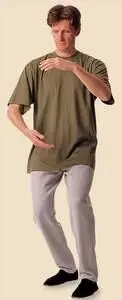
YIN BODY SHAPE
Читать дальше




